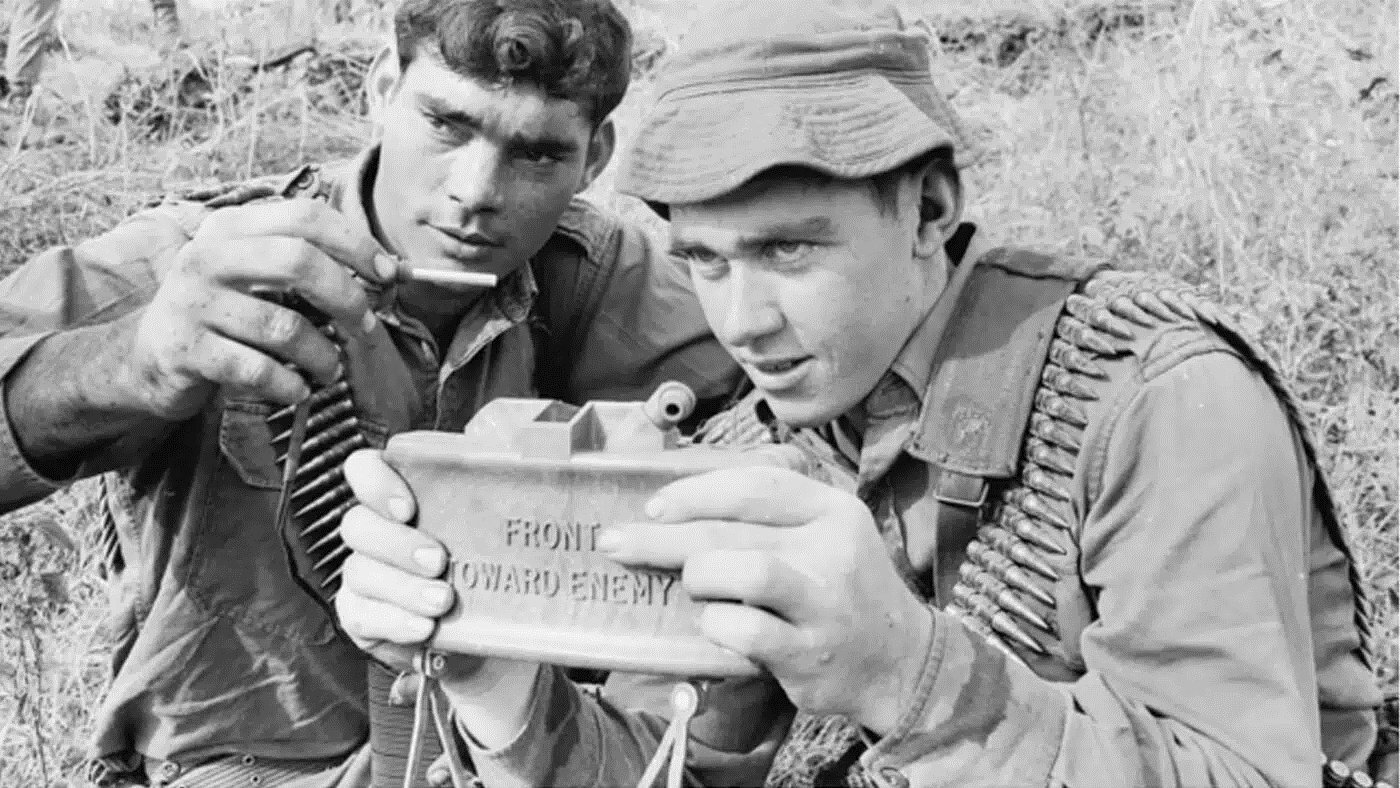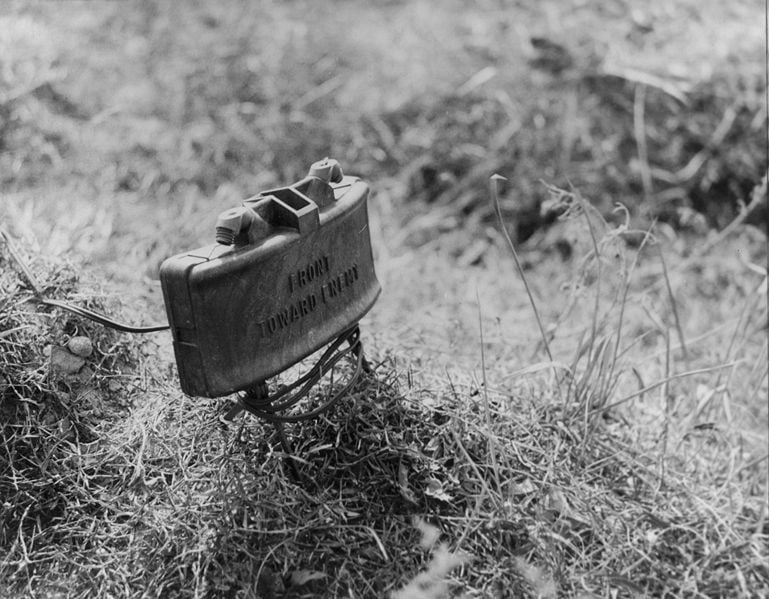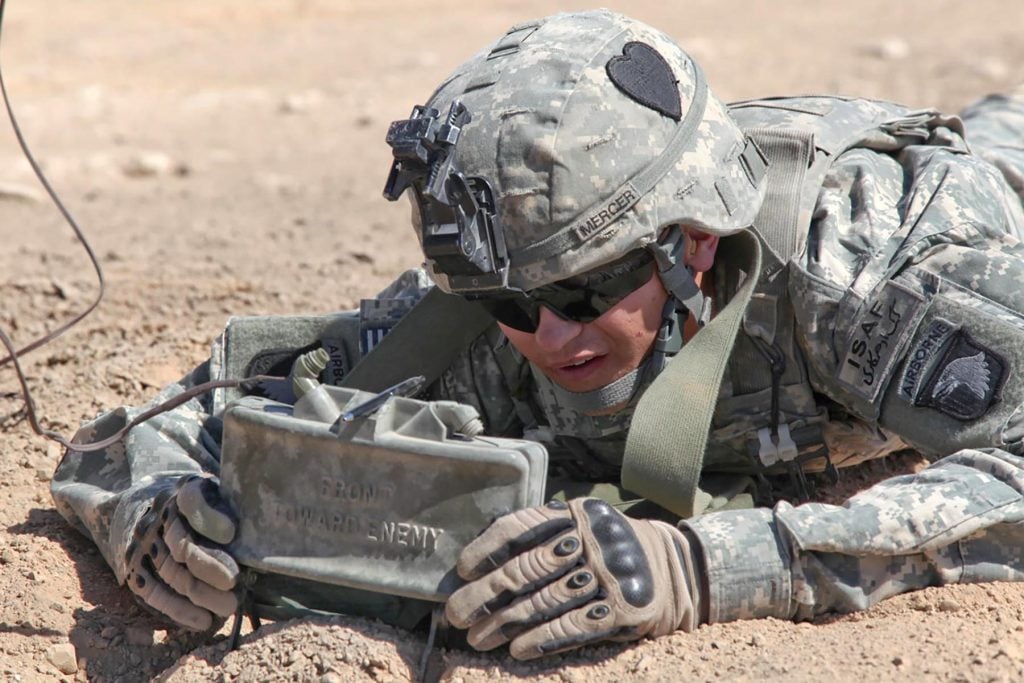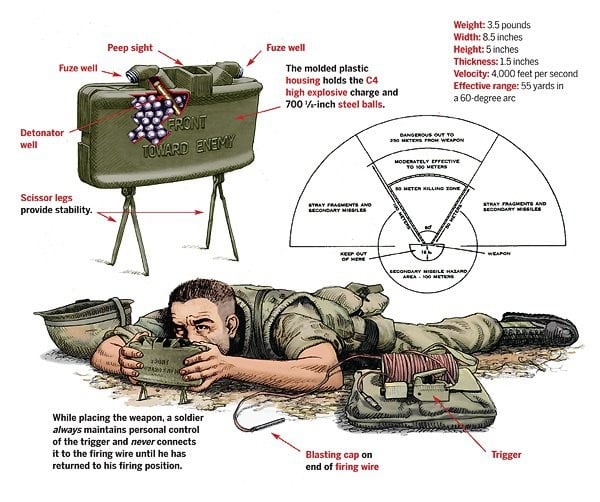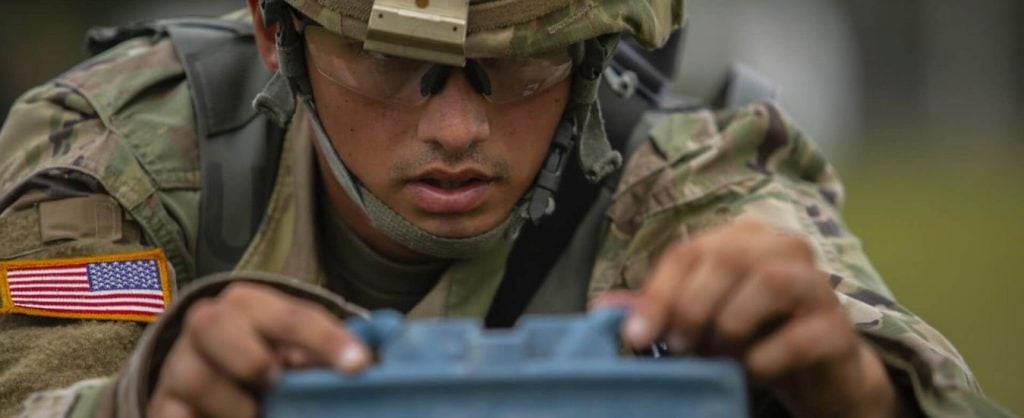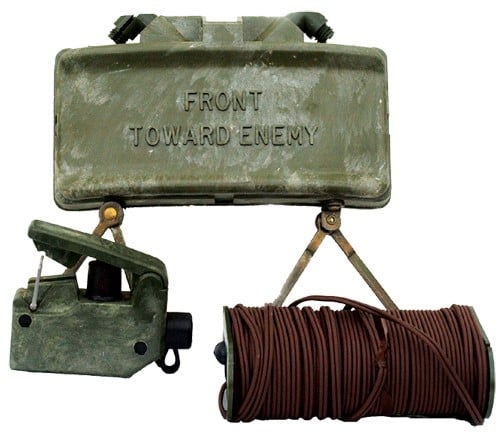The sound of “Front toward enemy” echoes across the battlefield, signaling the activation of one of the most formidable anti-personnel weapons in modern warfare – the Claymore mine. Developed in the mid-1950s and made infamous during the Vietnam War, this compact and deadly device has left an indelible mark on the history of combat.
From its origins as a Scottish broadsword to its evolution as a sophisticated explosive, the Claymore mine has transformed the way soldiers engage and defend against their adversaries. In this comprehensive article, we will delve into the remarkable story of how this unassuming yet lethal weapon forever altered the face of modern warfare.
List Of Weapons Used by GGK Commandos
The Origins of the Claymore Mine
The Claymore mine’s lineage can be traced back to the Scottish broadsword of the same name, which was renowned for its devastating close-range impact. This heritage is reflected in the mine’s design, which features a distinctive V-shaped arrangement of steel balls that deliver a powerful and wide-reaching blast. The first patent for the Claymore mine was filed in 1956 by Norman Macleod, who sought to create an anti-personnel weapon that could effectively neutralize enemy forces within a specific area.
The Claymore’s Debut in Combat
The Claymore mine’s baptism of fire came during World War II and the Korean War, where it was used to bolster defensive perimeters and ambush enemy troops. However, it was during the Vietnam War that the Claymore truly earned its infamous reputation. Deployed extensively by American forces, the mine became a crucial tool in preventing Vietcong incursions and safeguarding forward positions. Many Vietnam War veterans credit the Claymore with saving their lives, as it helped to repel enemy attacks and prevent their positions from being overrun.
The Deadly Efficiency of the Claymore
The Claymore mine’s lethality stems from its unique design and explosive power. Containing approximately 700 steel ball bearings and 1.5 pounds of C4 explosives, the Claymore is capable of propelling its deadly projectiles up to 100 meters in a 60-degree fan pattern. This devastating effect is further amplified by the mine’s peep sight, which allows the user to precisely aim the blast towards the enemy. Within a 50-meter radius, the Claymore’s steel wall of projectiles is considered lethal, while the concussive force can maim or kill out to 250 meters.
The Claymore’s Adaptability and Versatility
One of the key factors contributing to the Claymore’s enduring relevance is its remarkable adaptability and versatility. The mine’s compact size and lightweight design make it easy to transport and deploy, allowing soldiers to quickly establish defensive perimeters or set up ambushes. The Claymore’s foldable metal legs and the ability to tie it around trees or other objects further enhance its versatility, enabling it to be positioned at varying heights to maximize its effectiveness.
The Claymore’s Role in Defensive Strategies
The Claymore mine’s prowess in defensive operations is unparalleled. By lining the perimeters of forward positions and accompanying barbed wire, the Claymore became a formidable deterrent against enemy incursions. Its ability to inflict devastating casualties on approaching forces made it a crucial component of the defensive strategies employed by American troops during the Vietnam War. Many a Vietcong assault was thwarted by the lethal power of the Claymore, underscoring its importance in safeguarding critical military assets and personnel.
The Claymore’s Contribution to Ambush Tactics
In addition to its defensive capabilities, the Claymore mine also played a pivotal role in ambush tactics. By strategically positioning the mines along likely enemy approach routes, American forces were able to ambush and eliminate Vietcong units with devastating efficiency. The Claymore’s ability to propel its deadly projectiles in a focused, directional pattern made it an ideal weapon for such operations, allowing soldiers to target the enemy while minimizing the risk to their own forces.
The Claymore’s Limitations and Challenges
Despite its remarkable effectiveness, the Claymore mine has not been without its limitations and challenges. One notable incident recounted by Capt. Rick Woolard (Ret) involved a malfunction where the mine failed to detonate, forcing his team of SEALs into a firefight that resulted in Woolard being shot twice. This underscores the importance of proper maintenance and the inherent risks associated with the Claymore’s explosive nature.
A Closer Look at Malaysia’s Elite Special Forces
The Claymore’s Enduring Legacy
The Claymore mine’s impact on modern warfare is undeniable. Fifty years after its initial deployment, this versatile and lethal weapon remains in use by the U.S. military and several other countries around the world. Its ability to strengthen defensive perimeters, ambush enemy forces, and inflict significant casualties has solidified the Claymore’s status as a critical component of the modern battlefield. As military technology continues to evolve, the Claymore’s adaptability and effectiveness ensure that it will remain a formidable presence in the annals of combat for years to come.
The Claymore’s Tactical Advantages
The Claymore mine’s tactical advantages extend beyond its raw destructive power. Its compact size and lightweight design make it easy to transport and deploy, allowing soldiers to quickly establish defensive positions or set up ambushes. The mine’s foldable metal legs and the ability to tie it around trees or other objects further enhance its versatility, enabling it to be positioned at varying heights to maximize its effectiveness.
The Claymore’s Psychological Impact
The Claymore mine’s impact on the battlefield extends beyond its physical effects. The ominous warning of “Front toward enemy” and the mine’s distinctive appearance have instilled a sense of dread and caution in enemy forces. This psychological factor can play a significant role in deterring or disrupting enemy movements, as adversaries become wary of triggering the Claymore’s devastating blast.
The Claymore’s Technological Advancements
Over the years, the Claymore mine has undergone various technological advancements to improve its performance and safety features. From the initial T-48 design to the current M18A1 model, the Claymore has benefited from improvements in explosive materials, detonation mechanisms, and targeting capabilities. These upgrades have further enhanced the mine’s lethality and reliability, ensuring its continued relevance in modern warfare.
The Claymore’s Ethical Considerations
The use of the Claymore mine has raised ethical concerns, particularly regarding its indiscriminate nature and the potential for civilian casualties. While the mine is designed to target enemy combatants, its wide-reaching blast radius and the difficulty in controlling its effects have led to debates about its compliance with international laws and conventions governing the use of weapons. These ethical considerations continue to shape the ongoing discussion surrounding the Claymore’s place in modern warfare.
Why Dogs are Important for Indian Army Soldiers
Conclusion
The Claymore mine’s journey from its Scottish broadsword origins to its pivotal role in modern combat is a testament to the ingenuity and adaptability of military technology. This unassuming yet deadly weapon has forever changed the landscape of warfare, serving as a crucial defensive and offensive tool for armed forces around the world. As military strategies and technologies continue to evolve, the Claymore’s enduring legacy and its impact on the battlefield will undoubtedly continue to be felt for generations to come.
FAQs
Q1. What is the primary purpose of the Claymore mine?
The primary purpose of the Claymore mine is to serve as an effective anti-personnel weapon, designed to inflict maximum casualties on enemy forces within a specific area.
Q2. How does the Claymore mine work?
The Claymore mine contains an explosive charge and approximately 700 steel ball bearings. When detonated, the explosive propels the steel balls in a 60-degree fan pattern, creating a lethal wall of projectiles that can kill or maim targets within a 50-meter radius.
Q3. What are the key tactical advantages of the Claymore mine?
The Claymore mine’s key tactical advantages include its compact size, lightweight design, and versatility in deployment. These features allow soldiers to quickly establish defensive perimeters or set up ambushes, making the Claymore a valuable asset in modern warfare.
Q4. How has the Claymore mine evolved over time?
The Claymore mine has undergone various technological advancements over the years, including improvements in explosive materials, detonation mechanisms, and targeting capabilities. These upgrades have enhanced the mine’s lethality and reliability, ensuring its continued relevance in modern combat.
Q5. What are the ethical concerns surrounding the use of the Claymore mine?
The Claymore mine’s indiscriminate nature and potential for civilian casualties have raised ethical concerns about its compliance with international laws and conventions governing the use of weapons. These considerations continue to shape the ongoing discussions about the Claymore’s place in modern warfare.
